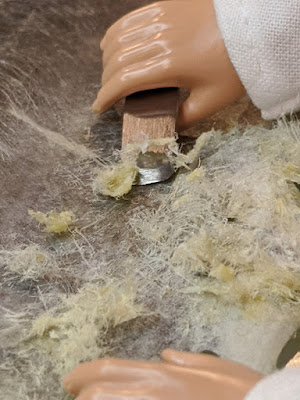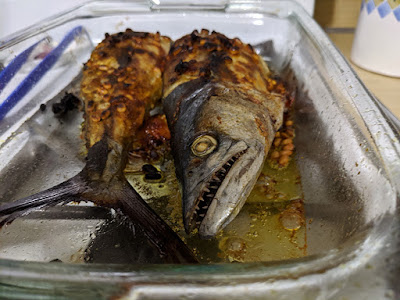Back before Christmas, Fritz Otto was on vacation in Greece (aka Wegmans like any good fisherman) and caught a bunch of sardines. Finally, a right-sized fish he could work from start to finish for his own binding(s).
Today, pulled them out of the freezer to practice his flaying skills...
 |
| Catch of the day. |
 |
| Filleting was the easy part. |
 |
| The Peachey lifting knife was great! |
Filleting was the easy part, but alas, the skin was too thin to get off. He also tried pulling it off of the intact fish but that was even less successful. Alas..., nothing left to do but make lunch for himself.
 |
| Just fried in a little olive oil with pepper. Didn't need more for a tasty meal. |
 |
| Rülps! (How Germans Burp) That was delicious! |
So, defeated in making parchment, successful in preparing a meal.
Book Arts arts du livre Canada (Vol 10., Nr. 2, 2019)
"Fish Tales, experiments with fish skin for bookbinding
The New Bookbinder: Journal of Designer Bookbinders (2020)
"Fish Tales, experiments with fish skin for bookbinding
The New Bookbinder: Journal of Designer Bookbinders (2020)
















